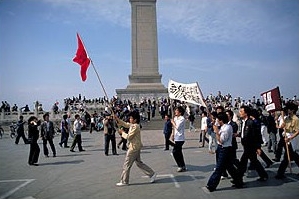10 Shocking Facts About the 1989 Tiananmen Square Protests That Will Change How You View History!
2025-05-16
- The Protests Were Led By Students - The 1989 Tiananmen Square protests were primarily driven by university students who demanded political reform, freedom of speech, and greater accountability from the Chinese government. Their courage inspired generations of activists worldwide.
- It Wasn't Just About Democracy - While many associate the protests with a push for democracy, the protesters also sought to address corruption, inflation, and bureaucratic inefficiencies that plagued China at the time.
- The Scale Was Massive - It's estimated that over one million people gathered in Tiananmen Square at the height of the protests, showcasing the sheer scale of public discontent and the diverse nature of the demonstrators, which included workers, intellectuals, and ordinary citizens.
- The Protests Lasted Seven Weeks - Beginning in mid-April and culminating in early June, the protests spanned seven weeks, during which the Chinese government initially tolerated the demonstrations before deciding on a military crackdown.
- Martial Law Was Declared - On May 20, 1989, the Chinese government declared martial law in Beijing, deploying tens of thousands of troops to the capital to control the situation, marking one of the most significant military mobilizations in China since the Cultural Revolution.
- The Iconic "Tank Man" Remains Unidentified - The brave individual who famously stood in front of a line of tanks on June 5th, 1989, known as "Tank Man," has never been definitively identified, and his fate remains unknown, symbolizing the enduring mystery and heroism of the protests.
- The Death Toll Is Disputed - Official Chinese reports claimed several hundred deaths, but eyewitness accounts and Western intelligence suggest the number could be much higher, possibly reaching into the thousands, highlighting the tragic human cost of the crackdown.
- Media Coverage Was Extensive and Risky - International journalists faced significant risks covering the protests, with many capturing harrowing images and footage that brought global attention to the events, despite the Chinese government's attempts to control the narrative.
- The Aftermath Was Swift and Severe - In the wake of the crackdown, the Chinese government launched a broad campaign to arrest and punish those involved in the protests, leading to widespread detentions and political purges that reshaped China's political landscape.
- Censorship and Memory Are Still Battlegrounds - To this day, the Chinese government censors any discussion of the Tiananmen Square protests, and commemoration of the events is strictly prohibited in China, making it a poignant example of how history can be controlled and contested.
Category: History | Topic: 1989 Tiananmen Square protests and massacre | @Wikipedia
